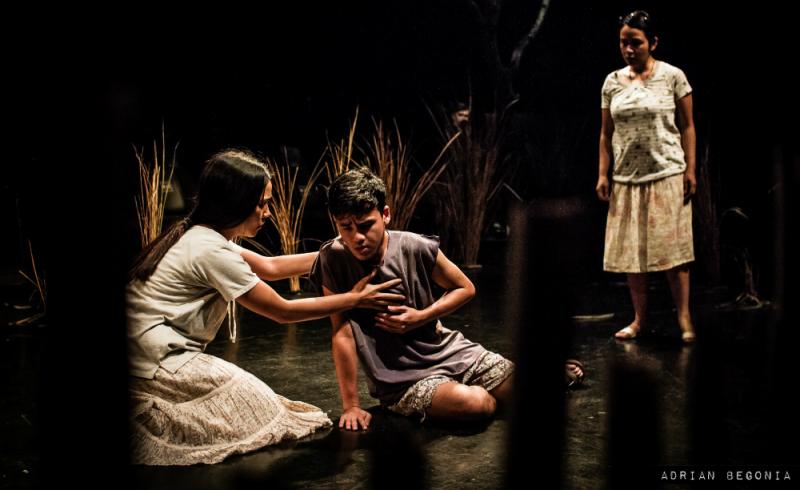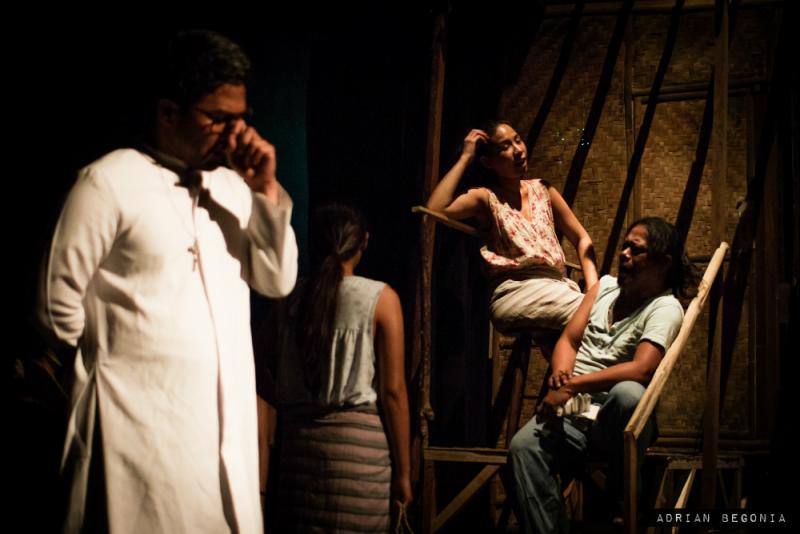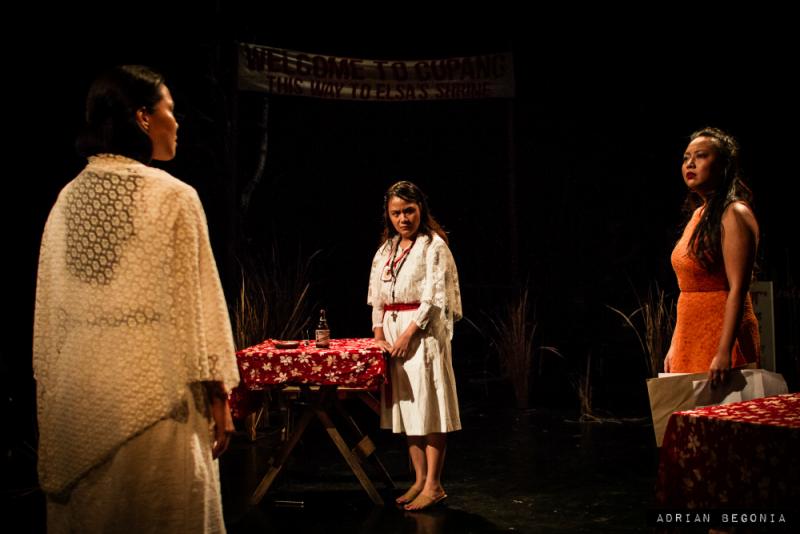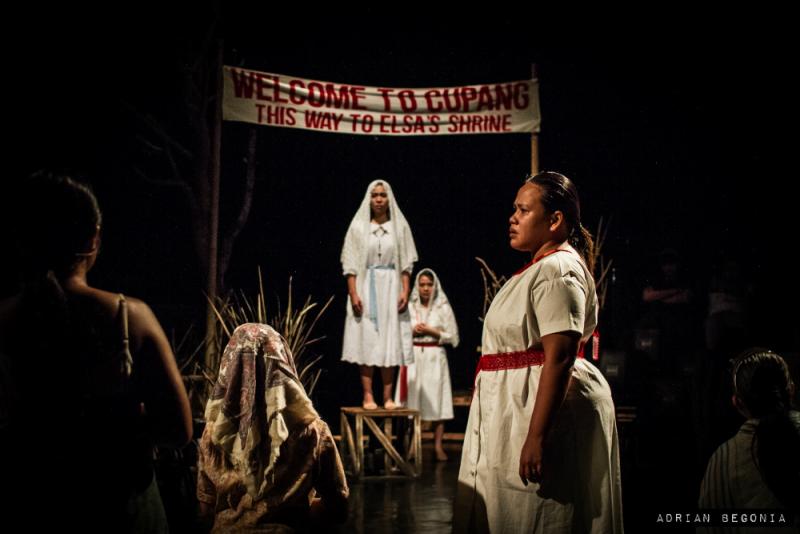Review: HIMALA: ISANG MUSIKAL Tells Its Story Similar to The Original Film

Manila, Philippines--Just when we thought a restaging of the musical adaptation of a highly-acclaimed Filipino film could never do wonders, we caught ourselves absolutely in awe of what was offered to us on the February 18 matinee of The Sandbox Collective's comeback musical, "Himala: Isang Musikal" (its last one was "Dani Girl" in 2014). Restaging may not even be the most appropriate word for this production. This version is more like a reimagination of what initially came to fruition 15 years ago.
Even if one is quite familiar with the plot twists and highlights of its classic story, this production still succeeds in keeping the audience interested in and invested on how a peculiar town and its residents embrace the "miracle" brought about by a conventional barrio lass, named Elsa, and her ability to heal the sick, through the intercession of the Blessed Virgin Mary.
With such a big story taking place in a Filipino town in the 1980s, creating a stage that resembles what a desolate town looked or felt like is already challenging to pull off. But for this production to be able to transport the audience into this barrio, called Cupang, and taking their experience to another level with a minimalist stage and with a simple piano accompaniment, is a marvelous feat.

Committed to this vision of making the setting of the play as organic as possible is Ed Lacson Jr., who serves as the show's director and set designer. His work in this show reminds us of Brilliante Mendoza (a multi-awarded director and production designer) in Philippine cinema. Lacson's oddly dispersed stage is a composition of three spaces: an almost-bare quadrangle at the center, where most of the action happens, and, at each endpoint of the quadrangle's diagonal are two more "side stages" that serves as Elsa's house and one that resembles an elevated ground or hill where she goes to pray to the Blessed Mother.
In addition, Lacson directs his actors to also occupy or "perform" in three smaller "pockets of space," whenever necessary. These dynamics in stage direction cleverly stimulate from the audience that sense of curiosity within a community, a psychosocial aspect that's important for this type of material. We vividly remember our reaction when the song "Bulungbulungan" (What Is This I Hear?) was staged. We get to hear pockets of conversation and observe nuances being displayed by the actors who happen to be in close proximity to where we are seated. In another scene, a confrontation is being staged at the other end of the theatre and we see members of the audience instantly stretching out their necks or turning their heads toward that area. Lacson's staging requires no "breaking of the fourth wall" just so he can make this theatrical experience as immersive as possible. In fact, it feels as if there was no fourth wall to begin with because the audience immediately gets to be living witnesses or imaginary kibitzers of what transpires in this town.

In the post-show talkback, Ricky Lee (who wrote the original screenplay and also the book for this adaptation) expresses how happy he is that this production turned out to be "very close to the 1982 movie" in terms of its tone and storytelling. We absolutely agree with him. Although Elsa (Aicelle Santos) is assumed to be the heroine of the story, Santos' portrayal actually allows the audience to question her character's version of the truth, especially when Elsa, later on, appears to be obedient and of service even to those who are clearly capitalizing on her miraculous gift.
As events continue to unfold in Cupang, we begin to doubt our initial profiles of the other characters in the story. For instance, we saw the prayerful devotees passing judgment to those who don't conform to their moral standards, the foul-mouthed Nimia (Kakki Teodoro), after learning about what happened to her friends, began to show compassion and even became a shoulder to cry on for Elsa, and the supposedly religious and faithful Chayong (Neomi Gonzales) ironically was unable to forgive herself and, eventually, lost her desire to live.

Certainly, there are very few things to complain about in this production. Given the actors are not using lapel microphones as amplification, there were some minor issues with regard to the clarity and modulation, especially when an actor is facing away from your section of the stage while speaking a line or singing a song. Although there's hardly any standouts in this huge company of actors, since each and everyone, including the ensemble, gives consistently strong performances, we're most satisfied with Bituin Escalante's (Aling Saling) singing, quite drawn by David Ezra's (Orly) stage presence, and sufficiently pleased with Santos' ability to hold her own in spite of having big shoes to fill (multi-awarded actress Nora Aunor played Elsa in the film).
However, should this version of "Himala: Isang Musikal" be resurrected and restaged in the future, there's one thing we'll be praying for, and that's for Vincent De Jesus (composer and lyricist) to reconsider editing some of the songs in the show. For such an iconic role as Elsa, there has to be an equally memorable song in the show in order for us to keep her memory alive in our hearts.
"Himala: Isang Musikal" is produced by The Sandbox Collective, together with 9 Works Theatrical. It runs until Sunday, March 4, at the Power Mac Center Spotlight in Circuit Makati.
Buy tickets at TicketWorld.com.ph.
Photos: Adrian Begonia
Videos
